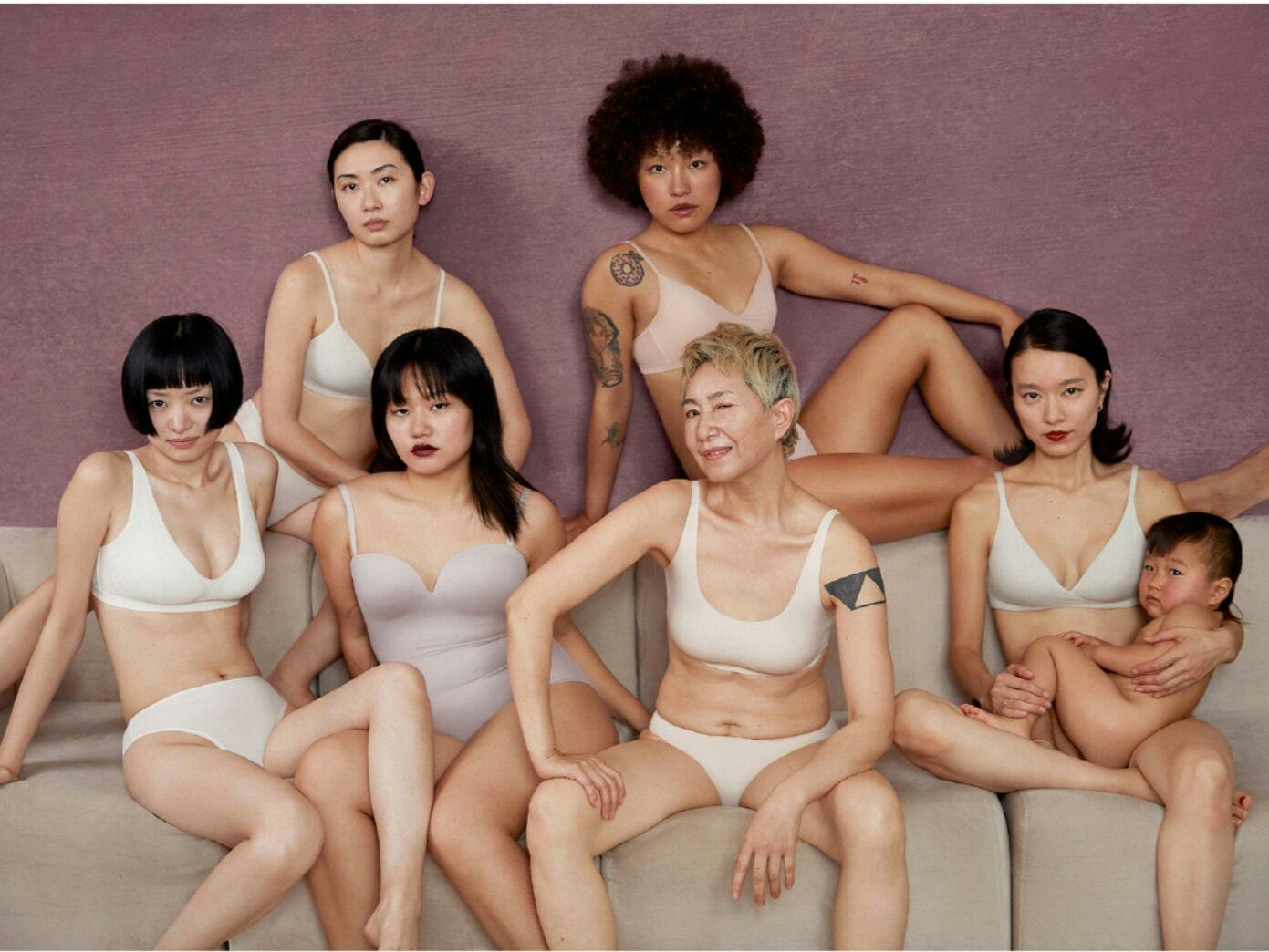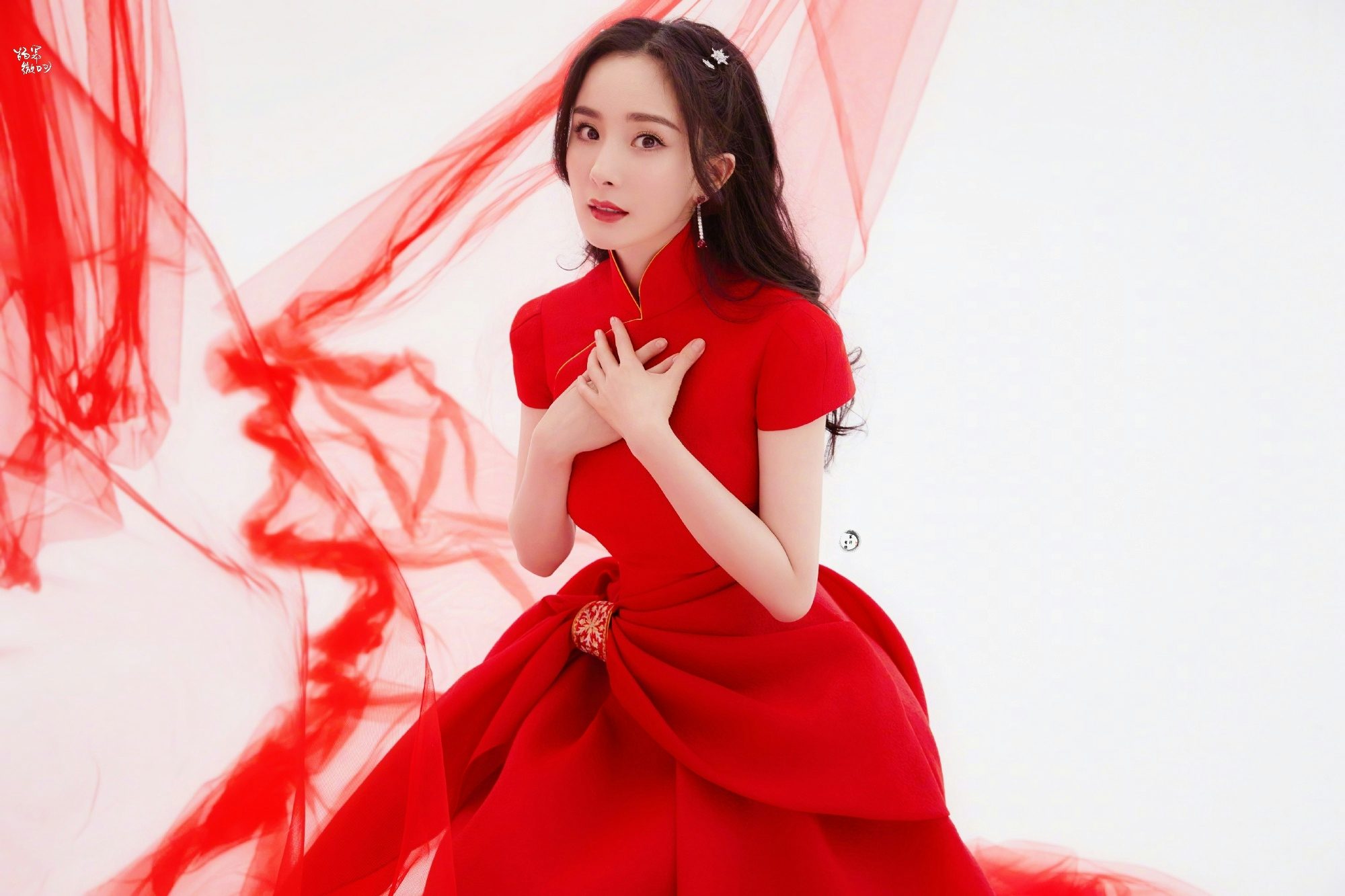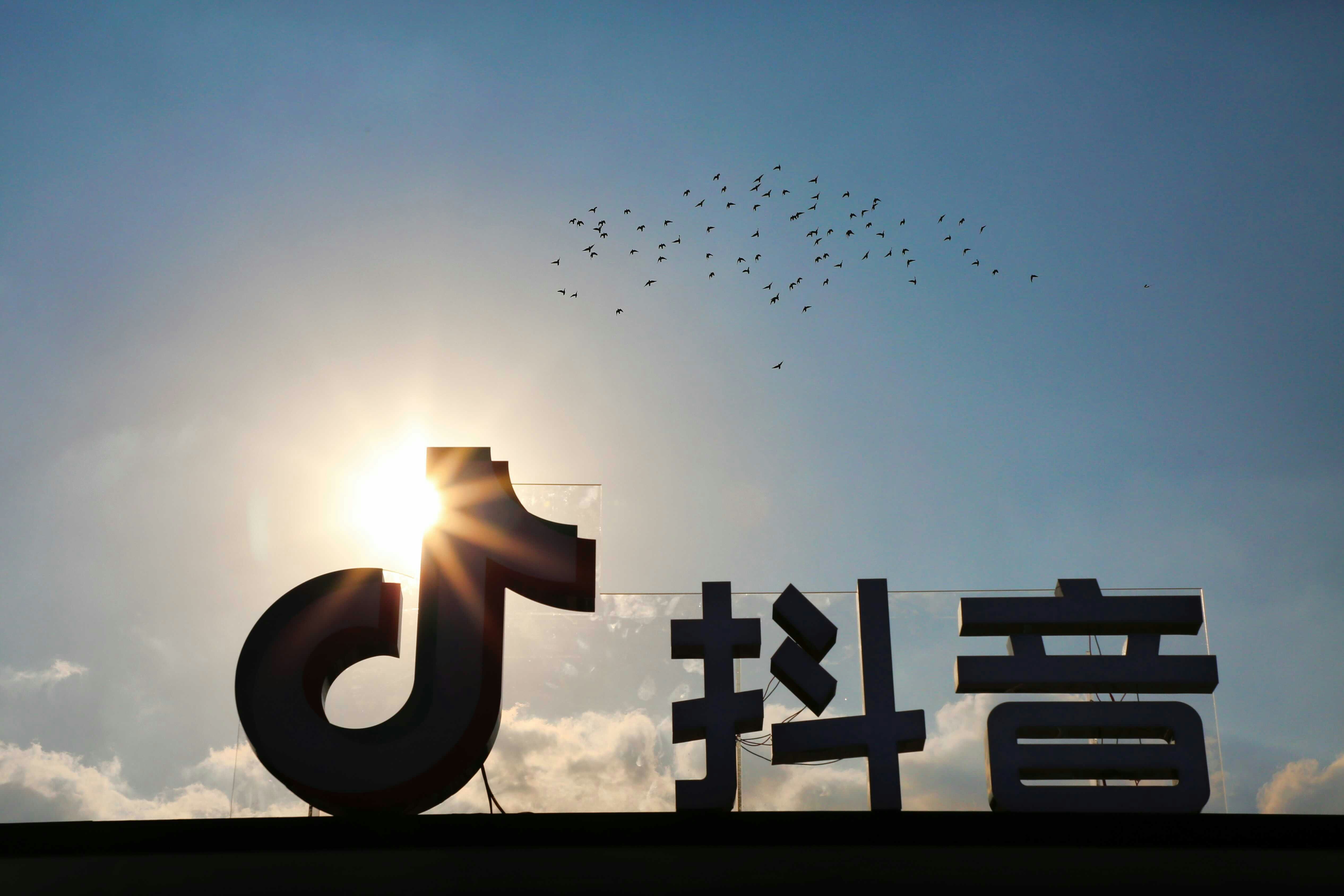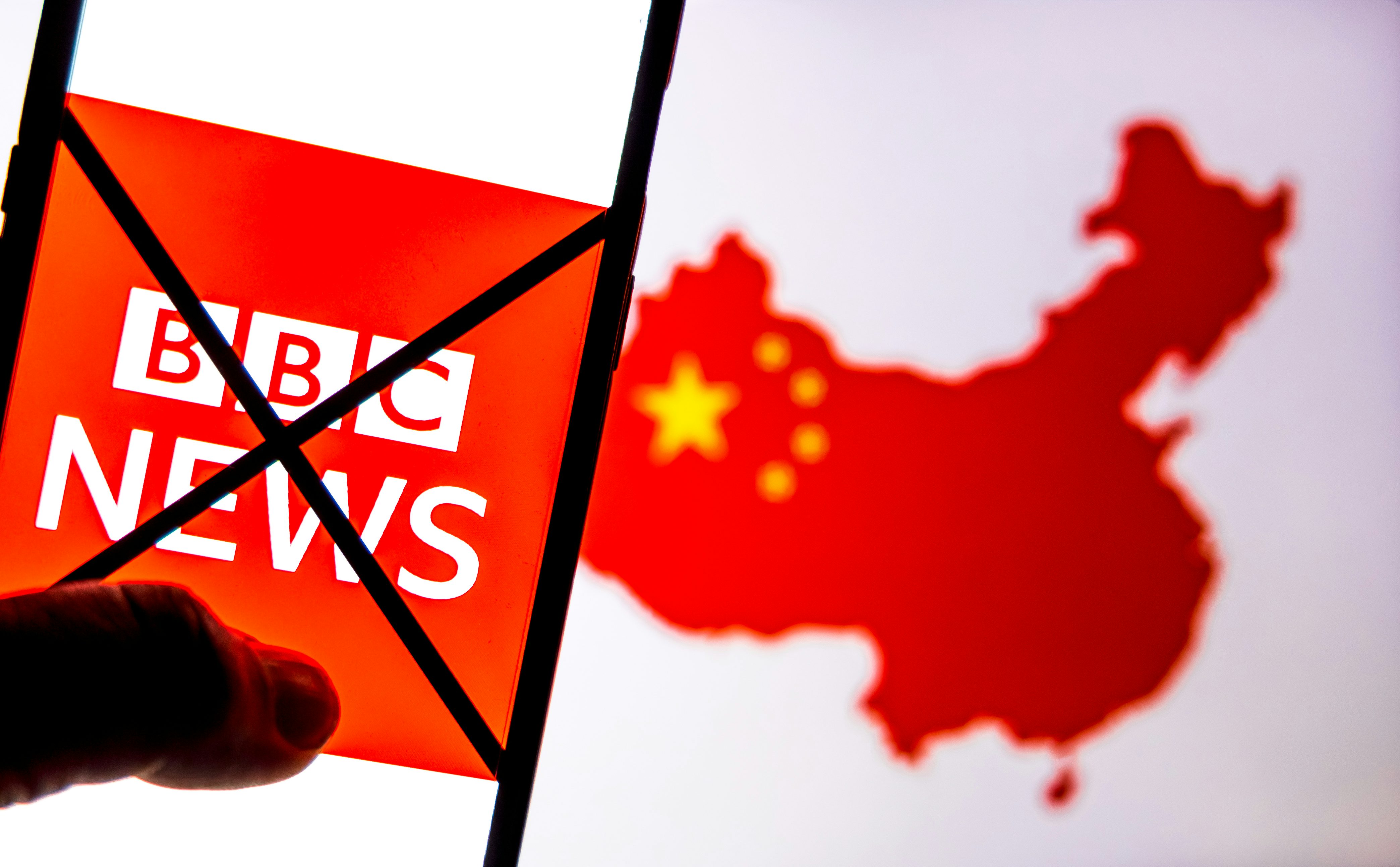Chinese Brands Can Teach Victoria’s Secret How to Sell Lingerie Today | China Decoded, BoF Professional
Neiwai, Ubras, Bananain, Toffee and Livary Mio are all names that probably mean very little to people outside of China, but within the world’s largest fashion market, they are doing a roaring trade.
All relatively new players, most of these brands only started life within the last five years, following somewhat similar trajectories by launching on China’s massive e-commerce platforms and highlighting the kind of comfortable, plainly designed and inexpensive styles that have resonated with China’s younger generations.
They are also competing for a larger slice of a more and more lucrative pie, with iiMedia Research Group estimating the value of the Chinese underwear market at $61 billion last year.
Last year, Ubras, which specialises in one-size-fits all lingerie sets in high tech fabrics and muted colours, usurped Uniqlo to become Tmall’s best-selling underwear brand over the Singles’ Day sales festival. Bananain, which has only operated since 2016, boasting gender-neutral styles and “no scratch” tags, was also in the top five.
Launchmetrics data shows that, of the top five brands in term of social media coverage in China last year, only one, Victoria’s Secret (at number five) comes from outside China. Ubras not only ranked first, but also saw a more-than 500 percent increase in social media coverage.
“The Chinese lingerie market used to be dominated by international brands … but now more and more Chinese consumers choose domestic brands,” said Yi Kejie, content manager at China Marketing Insights. “I think one of the key reasons [for this shift] is that domestic brands have products that are more suitable to Chinese women’s bodies.”
When this campaign was released it was a really big bomb in the industry.
Neiwai was one of the first of this new generation of Chinese brands to tap into this current, having been founded back in 2012. With a compound annual growth rate of between 70 and 100 percent over the past three years and a network of more than 100 direct-to-consumers stores in 26 Chinese cities, the brand was already doing well, but in 2020 founder Liu Xiaolu saw its profile skyrocket with the release of a short film ahead of International Women’s Day called ‘No Body Is Nobody.’
“When this campaign was released it was a really big bomb in the industry,” Yi said.
Neiwai’s No Body is Nobody Campaign. Neiwai.
The campaign featured real-looking women who spoke about the ways in which they were pre-judged and devalued by society for their perceived deficiencies, each representing stereotypes such as “Big Boobs with No Brains,” “Mom,” “The Aged,” “Muffin Top,” and “Scars.” It was one of the boldest examples China had seen of inclusivity, body diversity and female self-empowerment in advertising.
“The best brand campaign is the one which has human-touch and represents the real thinking of modern Chinese women,” Neiwai founder, Liu Xiaolu told BoF. “[We are a] brand which has been growing along with the rising consciousness of Chinese women about their own bodies,” she added.
Though this seems a similar trajectory to that taken by the Western brands toward inclusivity and empowerment as cornerstones of the lingerie sector, the journey to this point in the market’s development in China has been remarkably swift.
Spending More on Intimates
When Wu Yilei, now the owner of a multi-brand fashion boutique in Shanghai, bought her first lingerie set, the experience was typical for China in the early 2000s.
“Like everyone else at that time in China, you went to Gujin and they had a teenager line which was plain cotton and then the old ayi [aunty] touched your boobs and told you the size,” she recalled.
For several decades before the arrival of international brands, China’s lingerie market was dominated by local giants, such as the aforementioned Gujin, as well as other competitors, such as Aimer (which announced last week its intention to IPO in the near future) and Dushi Liren (also known by the English name Urban Lady) which sold mass produced body shaping push-ups and underwired bras.
By the early 2010′s Wu, like many other young women of her generation, was looking for something different, and international fast fashion giants such as H&M, Inditex’s Oysho and Uniqlo, rather than specialty lingerie brands, were stepping in to provide a broader range of styles to women like her.
This was the golden age for international lingerie brands in China, and (with the advantage of hindsight) may well have been the perfect time for international specialty retailers such as Victoria’s Secret, Aerie or La Perla to more forcefully target the market. But the former only opened its first full store in China — a four-story, 25,850-square-foot flagship in Shanghai — in 2017.
Having said this, prior to 2017, there was still a widely-accepted idea that Chinese women would not be prepared to pay a premium for lingerie, wanting to devote more disposable income to fashion and luxury items that could be prominently displayed — like handbags.
But five years ago, Wu’s multi-brand boutique Xinlelu started stocking lingerie brands — niche Chinese labels like Her Senses, Crème and Atelier Intimo — and at the beginning, she says that price sensitivity among some consumers was an issue.
“We had people ask why they would spend as much on a lingerie set as they would on a dress, but we don’t hear that anymore,” Wu said. “Actually, we have some VIP clients spending much more on lingerie than they do on their outer wear.”
What has changed?
China’s Nascent Feminists Come of Age
Ask young Chinese women what is behind this movement away from push-up bras and towards a more comfortable and natural lingerie look and the answer is consistent — feminism.
Women used to wear bras to please men, but now they think more about themselves and how to please themselves.
China’s post-90s generation of women, most of whom were raised only children and given every opportunity for advancement academically and professionally that their parents could afford — opportunities that may have been reserved for brothers in previous generations — have come of age believing they can do anything, regardless of their gender.
It has proven difficult for them to reset their expectations as adults, creating a disconnect with traditional ideas of what demure and respectable role women should play in Chinese society — especially when it comes to ideas of sexuality, romantic relationships and marriage.
“Women used to wear bras to please men, but now they think more about themselves and how to please themselves, especially millennials and Gen Z. That’s why comfort is being valued more than ever,” Yi Kejie said.
Wu Yilei agreed: “It has a lot to do with the feminism movement and people feeling comfortable [rather than emphasising] their curves in an unnatural way.”
The shift towards comfort is also backed by statistics from CBNData, which show wireless lingerie sales growing 50 percent annually over the past five years, mostly thanks to younger consumers. Brands such as Neiwai have been able to leverage this shift in an authentic way, because, as Liu Xiaolu explains, it’s a central part of the brand’s ethos.
‘Sexy or not’ is more delicate than ‘fashionable or not’, or ‘trendy or not’.
“Nothing is more beautiful than freedom of the body,” she said. “Only when women wear clothes which celebrate the freedom of the body, [can] they celebrate the free life choices of their own. That’s how we combine the brand philosophy with product design,” she added.
Not only are ideas about sex and sexuality evolving very rapidly in China, they are also imbued with a veritable minefield of cultural sensitivities. This makes messaging and marketing around sexiness in China a genuinely difficult one for international brands to navigate. In a market in which international brands have been known to make cultural missteps on T-shirts, the addition of sexual culture and intimate garments is a high-wire act.
“Victoria’s Secret needs to understand, it’s so much about the culture. ‘Sexy or not’ is more delicate than ‘fashionable or not,’ or ‘trendy or not.’ This is going to be so much harder for somebody outside the culture to understand: How much can you expose? What tones and colours are right? How you talk to people? For international brands all these things are very challenging,” Wu said.
To some extent, brands like Victoria’s Secret — which has been trying to shake off its hyper-sexualised image and scandals associated with its founder — have worked to keep pace with local challengers by following their example. One month after Neiwai’s blockbuster ‘No Body is Nobody’ short film, Victoria’s Secret named wildly popular actresses Zhou Dongyu and Yang Mi as brand ambassadors and released a ‘Sexy Like This’ campaign. The campaign videos feature Zhou and Yang showing very little skin and sharing their understanding of what “sexy” means, Zhou’s one-minute video describes sexiness as “comfortable, nonconformist, and natural.”
Actress Zhou Dongyu was named a Victoria’s Secret ambassador in China in April 2020. Victoria’s Secret.
Victoria’s Secret doesn’t break out sales figures specifically for the China market, and did not respond to BoF’s requests to comment for this story. This makes it difficult to judge whether its latest moves have had a measurable impact on its local business over the past year.
Though the campaign and its new ambassadors were largely received positively, what remains unclear is whether Victoria’s Secret can keep pace with local players, which not only have cultural fluency at their disposal, but also a native understanding of China’s unique social commerce environment.
Digital Natives Working All the Angles
“The real difference between local and global brands is that local brands know how to embrace tactics that engage the consumer at all levels, whereas global brands typically come in and use big names with a top-down approach — assuming that will be sufficient in winning over the Chinese consumer,” said Kim Leitzes, APAC managing director at Launchmetrics.
A campaign image from one-size-fits all underwear brand, Ubras. Ubras.
Ubras, for example, includes a card in its packaging with every product sold that encourages the purchaser to scan a QR code and connect with a customer service rep on WeChat, who then adds that customer to Ubras private traffic WeChat groups and posts regular updates on new products for example, or livestream sales, which the customer then tunes into and may use to make a new purchase.
“It’s kind of a circle,” Yi Kejie said. “Ubras is very smart to increase its sales [while building] a closer relationship with its customers.”
I can’t emphasise enough how important local expertise is, especially in a category that could be considered a bit risky or taboo.
She also points to Toffee, which is marketed as a specialty brand selling bras to large-breasted Chinese women. Last year the brand sold more than 100 million yuan ($15.5 million) worth of its bras on Tmall.
Toffee’s founder, a man who goes by the mononym Dabai, opened a discussion thread on Douban, a Quora-like social media platform in China, in order to do some market research on the pain points for women when they buy bras. The lively discussion resulted in Dabai finding a business partner who became chief designer of the brand, as well as a community of loyal customers who repurchase Toffee at a rate claimed to be double that of other brands.
“I can’t emphasise enough how important local expertise is, especially in a category that could be considered a bit risky or taboo; it simply provides you with more opportunity,” Leitzes added.
In a market as large as China’s there remains plenty of opportunity, especially, as Wu Yilei points out, many of the rising domestic players are placing their bets in the same place — comfortable, natural, wireless garments without overt embellishments and an affordable price.
“This group of brands is changing what people are wearing, but my feeling is that after two or three years people are going to want to wear something new and a new level of design will come into play. It will always be challenging for international brands, but the market is there, and the opportunity is there,” she said.
Success lies in anticipating the next wave while producing lingerie products that place Chinese women at the centre of the brand which they feel are suitable for their bodies, lifestyle, cultural and social needs all at once. Thus far, this has proven a difficult task for international players, but it’s not an impossible one.
时尚与美容
FASHION & BEAUTY
Actress Yang Mi in bespoke Guo Pei for the Spring Festival Gala 2021. Guo Pei.
China’s Spring Festival Gala Showcases the Likes of Chanel, Stella McCartney and Sankuanz
The programme, which boasts an audience of over 1.2 billion, is an important stage for international luxury brands fighting for exposure. Chanel, Miu Miu, Ermenegildo Zegna, Valentino, Stella McCartney, Cartier, Boucheron, and Chaumet were among the luxury houses that dressed young stars like Wang Yibo, Karry Wang and Zhou Dongyu. A white Gucci coat worn by Gucci’s China ambassador Ni Ni quickly became a trending topic on Weibo. But a number A-list celebrities chose local brands this year instead. Guo Pei, Sankuanz, Calvin Luo, Laurence Xu and Le Fame were chosen by Yang Mi, Jackson Yee, Angela Chang, Chen Linong, Dilraba Dilmurat respectively. An in a costume show that utilised VR technology, Supermodels Sui He, Ming Xi, actress Zilin Zhang and singer Li Yuchun (Chris Lee) sported ensembles by the students of the Beijing Institute of Fashion Technologies and local couture brand Heaven Gaia. (BoF)
Chinese Makeup Brand Yuetong Secures Funding
Makeup and fake lash maker Yuetong secured tens of millions of yuan in a pre-Series-A funding round, led by Magic Capital followed by Fengwu Capital. The investment will be used to improve the brand’s supply chain, increase production and expand offline stores. Founded in 2017, Yuetong was initially sold in the US before returning to the domestic market. Its core products are soft magnetic false eyelashes. Founder Zhao Weisheng previously cited a conservative estimate for China’s rapidly growing market for soft magnetic eyelashes of about 40 billion yuan ($6.2 billion). According to Qianbidao, a financial media data provider, over 800 new Chinese false eyelash enterprises were registered in the last two years alone. (BoF)
科技与创新
TECH & INNOVATION
A Douyin sign at The Place shopping mall in Beijing, China. Getty Images.
Douyin Draws Over 70 Billion Digital Interactions During Spring Festival Gala
TikTok’s Chinese sister app, which signed on to be the annual CCTV Spring Festival Gala’s top sponsor, poured 1.2 billion yuan ($185 million) into digital red packet giveaways during the celebratory broadcast. The giveaway brought over 70 billion digital interactions to its platform, where red packets were claimed. For years, digital red packets sponsored by tech giants like Alibaba and Tencent have upped engagement for the country’s most-watched television program. Douyin’s move highlights the Chinese population’s sky-high digital engagement rates and the increasingly competitive battle for screen time. (BoF)
Sexism and ‘Perverted’ Anime Push Netizens, Brands to Boycott Bilibili
Chinese brands like feminine hygiene product maker Sofy and beauty brand UKISS said they would stop advertising on the popular video-streaming platform after it was accused of promoting sexually suggestive content. Bilibili advertised Japanese anime series Mushoku Tense to teens, but users were quick to point out the protagonist’s paedophilic behaviour. A boycott ensued after netizens spoke out about the platform’s failure to police sexual content and misogynistic comments. Bilibili has since removed the anime for “technical reasons” and declared it would crack down on problematic content, but it remains to be seen if the platform, which has worked with luxury brands like Louis Vuitton, will feel an impact in the long-term. (SupChina)
消费与零售
CONSUMER & RETAIL
Alibaba. Shutterstock.
Alibaba Adapts to China’s Evolving CNY Spending Habits
This year’s Lunar New Year rush was dampened by Covid-19 outbreaks, meaning people were encouraged to buy gifts for their families online rather than delivering presents in person. According to Alibaba, searches for gifts for parents on its Tmall platform quadrupled its daily average on February 4, the day preparations for the festival typically begin. Though businesses traditionally close their doors over Lunar New Year, Alibaba has continued to operate all platforms across its ecosystem and 50,000 post stations under its logistics arm Cainiao. (Jing Daily)
JD.com Plans to Spin Off Shipping Unit in Hong Kong Listing
Spurred by the growing demand for logistics services amid the current e-commerce boom, the Chinese e-commerce giant announced plans to spin off its JD Logistics shipping business in a listing on the Hong Kong Stock Exchange. The unit may be valued at about $40 billion, people familiar with the matter said previously. JD.com will remain a majority shareholder and will realise value from the business in the listing, the company said in a regulatory filing, but details of the proposed spinoff haven’t been finalised. JD Logistics operated more than 800 warehouses across China as of September 30. (Bloomberg)
China Dethrones the US as Europe’s Top Trade Partner
New data from the EU statistics agency Eurostat revealed that China usurped the US’ long-held top spot last year, owing to strong demand for European goods in China and Chinese medical equipment in Europe, respectively. The bloc’s trade volume with China reached 586 billion euros ($711 billion) last year, beating the US’ 55 billion euros ($673 billion). Imports from China rose over 5 percent, in contrast to a 13.2 percent decline in imports from across the pond. Meanwhile, the EU and China are working to ratify a Comprehensive Agreement on Investment (CAI) that would pave the way for European firms to access the Chinese market. (Quartz)
政治、经济、社会
POLITICS, ECONOMY, SOCIETY
BBC banned from China. Shutterstock.
BBC Head Speaks Out Against China Ban
The broadcaster’s director general Tim Davie criticised Beijing for blocking its news coverage in mainland China and Hong Kong. “The BBC should be able to do its reporting without fear or favour … there are significant and global threats to the free media as some seek to increase their control of information,” he wrote in a statement published on Twitter. The BBC was banned in China last Friday after authorities accused it of being biased; its National Radio and Television Administration said the broadcaster had undermined “ethnic solidarity” in the country. The move was almost certainly in response to the UK’s decision to strip the state broadcaster China Global Television Network (CGTN) of its UK licence a day earlier after Ofcom concluded that the network was ultimately controlled by the Chinese government. (The Guardian)
Spring Festival Gala Blackface Sparks Controversy
Speaking of CGTN, the state broadcaster came under fire earlier this week for featuring blackface in its annual Spring Festival gala. A segment of the four-hour show saw performers sported outfits that approximated African garments and skin darkened with makeup. Though China’s foreign ministry claimed the integration of cultural elements was a sign of respect, netizens were quick to criticise the programme online. “Is there any difference between Chinese people doing blackface and white people slanting their eyes to make fun of Asians?” a user on Weibo wrote. This isn’t the first time the network has received backlash for racist depictions: a skit in 2018 where actress Lou Naiming performed with brown face and body makeup while carrying a fruit basket on her head was similarly lambasted by people across the world. (Reuters)
China Decoded wants to hear from you. Send tips, suggestions, complaints and compliments to our Shanghai-based Asia Correspondent [email protected].







